Introduction
This is the first consumer camcorder to go through our newly designed testing procedures and the MG670 showcases them well. JVC has yet again produced a standard definition camcorder with excellent video performance, a decent range of manual controls and other features, and an easy learning curve for first-time users.
Update: The Everio GZ-MG670 was selected as our 2009 Standard Definition Camcorder of the Year. To see why we chose it and read about our other 2009 awards, check out the 2009 CamcorderInfo.com Select Awards.
Front
{{section_header}}{{section.name}}{{/section_header}}

Back
{{section_header}}{{section.name}}{{/section_header}}

Left
{{section_header}}{{section.name}}{{/section_header}}
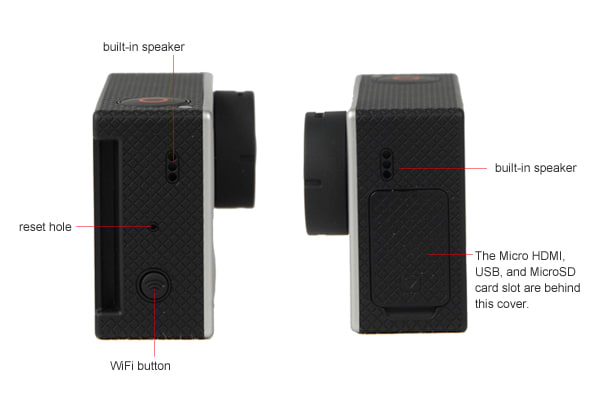
Right
{{section_header}}{{section.name}}{{/section_header}}
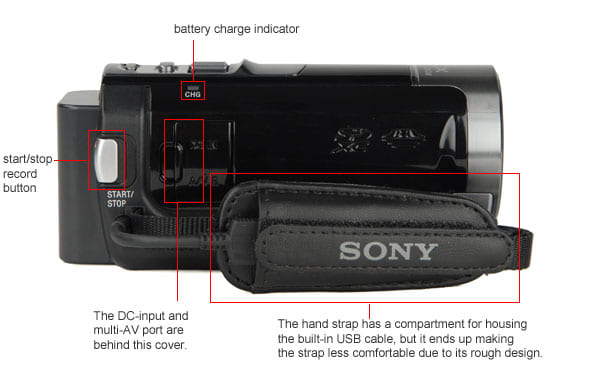
Top
{{section_header}}{{section.name}}{{/section_header}}

Bottom
{{section_header}}{{section.name}}{{/section_header}}

In the Box
{{section_header}}{{section.name}}{{/section_header}}

Color
{{section_header}}{{section.name}}{{/section_header}}
The JVC GZ-MG670 produced an excellent image in our bright light color testing, producing vivid colors without the aid of additional color controls or settings. Consumer camcorders are often guilty of oversaturation, which can result in poor color accuracy, but the MG670 passed our test with flying colors (pun intended). According to Imatest, the color error was an impressive 2.55 and the saturation level 86.54%. These results are on par with the Canon XL H1A, a high-end prosumer camcorder and are among the best we've seen so far in a consumer camcorder.
Note: CCI is using a new color error formula this year for our new 2009-2010 rubric, so the numbers won't match up with the results from most camcorders we reviewed over the past two years. The new system uses the CIEDE2000 formula, which is the most accurate equation for determining color error, and will be in place on all our reviews as of 2009. The color error for the three comparison models below has been recalculated using the new formula. More on how we test color.
Since consumer camcorders don't tend to offer a large variety of color modes, we compared the color under automatic settings to three other similar models: last year's JVC GZ-MG330, the Panasonic SDR-H60, and the Sony DCR-SR85. Of the three, last year's JVC fared the best, with a low color error of just 2.35. The Panasonic came in at 5.09, while the Sony's color error was 5.40. These scores are in line with the images as seen by the naked eye (below). The Panasonic has less vivid colors, while the Sony is darker and skewed in the greens and blues.
Note: Since the JVC GZ-MG670 is our first consumer camcorder to be reviewed this year, comparison models have been drawn from 2007 models. In the coming weeks, we will have more 2009 camcorders to compare to the MG670.
In detailed side-by-side comparisons, you can really see the difference between the JVC models and similar camcorders from Panasonic and Sony. While the newer MG670 results in a darker image, both models from JVC output an impressively clear field of color. The Panasonic and Sony models have splotches of discoloration that mar the color accuracy.
Low Light Color
{{section_header}}{{section.name}}{{/section_header}}
The JVC GZ-MG670 has a single 1/6-inch sensor—the same size that was seen in last year's GZ-MG330. This isn't a particularly large sensor, so we wouldn't expect much from the camcorder's low light performance. When we ran through the low light testing, however, we were pleasantly surprised. The MG670 showed an impressive color accuracy at 60 lux, nearly matching the camcorder's performance at 3000 lux. Once again, it seems that JVC's auto gain control (AGC) does an excellent job of producing clear, vibrant images in low light.
Note: CCI is using a new color error formula this year for our new 2009-2010 rubric, so the numbers won't match up with the results from most camcorders we reviewed over the past two years. The new system uses the CIEDE2000 formula, which is the most accurate equation for determining color error, and will be in place on all our reviews as of 2009. More on how we test low light color.
As you can see from the chart above, the MG670 does a fairly good job of maintaining hues, especially in the yellow and orange range. It struggled the most in pinks and purples. The side-by-side comparisons below show that the JVC camcorders—both this year's and last year's models—produce a brighter and clearer image than similar models from Panasonic and Sony.
Noise
{{section_header}}{{section.name}}{{/section_header}}
The JVC GZ-MG670 had relatively low noise levels—especially for a standard definition consumer camcorder. Like most consumer camcorders, there are no manual noise reduction settings and no gain controls, so our tests are based exclusively on the products' built-in processing. More on how we test noise.
Though we haven't yet run any other camcorders through our new noise tests, we can compare the results to the naked eye. The MG670, which produced a noise level of 0.6375%, has a relatively clear picture that is marred mostly by a sheen of fine noise. Last year's JVC GZ-MG330 seems to have less of the fine noise, but has more disruption in areas of the finest detail. The Panasonic SDR-H60 and Sony DCR-SR85—both models from 2008—have more coarse noise. The Sony, in particular, also has discoloration in the noise, which likely impacted the camcorder's color accuracy.
Low Light Sensitivity
{{section_header}}{{section.name}}{{/section_header}}
The JVC GZ-MG670 has an excellent low light sensitivity, especially compared to other affordable standard definition camcorders. The MG670 required just 8 lux of light to produce 50 IRE on our waveform monitor. More on how we test low light sensitivity.
These results are obviously in large part thanks to JVC's auto gain control (AGC). On the MG670, users have the option of turning AGC on, turning it off, or leaving it on auto. We tested the camcorder on all three settings and found that disengaging the AGC produced a virtually black image in low light. (The MG670 needed about 185 lux to produce 50IRE with AGC turned off.) AGC should only be turned off in bright lighting conditions.
As for the auto and on settings, we found that they produced very similar sensitivity results, with 'AGC auto' just edging out 'AGC on.' We chose to score the MG670 based on the 'AGC on' option, since the auto setting seems to decrease the shutter speed beyond what would be appropriate for most shooting circumstances.
Low Light Noise
{{section_header}}{{section.name}}{{/section_header}}
Although the GZ-MG670 uses gain to boost sensitivity in low light, the resulting image is relatively noise-free. The noise percentage with AGC on was just 0.9125%—compared to 1.11% on last year's JVC GZ-MG330 and even higher scores from the Panasonic and Sony models. This is a very good score for a standard definition consumer camcorder. More on how we test low light noise.
Looking at the crops above, you can also get a sense of the difference in noise qualities among the different models. As was true in bright lighting conditions, the MG670 has a very fine grain and little discoloration. The Panasonic also avoids discoloration, but the noise mars the image significantly. The Sony looks much sharper, but has larger splotches of colored noise.
Low Light Color
{{section_header}}{{section.name}}{{/section_header}}
The JVC GZ-MG670 has a single 1/6-inch sensor—the same size that was seen in last year's GZ-MG330. This isn't a particularly large sensor, so we wouldn't expect much from the camcorder's low light performance. When we ran through the low light testing, however, we were pleasantly surprised. The MG670 showed an impressive color accuracy at 60 lux, nearly matching the camcorder's performance at 3000 lux. Once again, it seems that JVC's auto gain control (AGC) does an excellent job of producing clear, vibrant images in low light.
Note: CCI is using a new color error formula this year for our new 2009-2010 rubric, so the numbers won't match up with the results from most camcorders we reviewed over the past two years. The new system uses the CIEDE2000 formula, which is the most accurate equation for determining color error, and will be in place on all our reviews as of 2009. More on how we test low light color.
As you can see from the chart above, the MG670 does a fairly good job of maintaining hues, especially in the yellow and orange range. It struggled the most in pinks and purples. The side-by-side comparisons below show that the JVC camcorders—both this year's and last year's models—produce a brighter and clearer image than similar models from Panasonic and Sony.
Motion
{{section_header}}{{section.name}}{{/section_header}}
Motion on standard definition camcorders never looks as good as it does in high definition. The JVC GZ-MG670 is certainly no exception to this rule, though it does offer better motion quality than some of the competition.
The video below is embedded from YouTube, which compresses quality a great deal. But you can still make out the trailing and artifacting, especially on the passing train. You also lose a great deal of detail in the pinwheel on the right. More on how we test motion.
Video Sharpness
{{section_header}}{{section.name}}{{/section_header}}
The JVC GZ-MG670 boasts a decent video resolution compared to other camcorders in its class. As is to be expected, the slightly increased sensor resolution over resulted in a slightly sharper picture when compared to last year's MG330 from JVC. The MG670 captured a horizontal resolution of approximately 350 lw/ph and a vertical resolution of 300 lw/ph. This is a good performance for a standard definition camcorder, though it obviously can't compare to high definition consumer camcorders. As we get more 2009 camcorders into our lab, we'll be able to see how the MG670 compares to the improvements made by other manufacturers in standard definition resolution. More on how we test video sharpness.
Testing Samples
{{section_header}}{{section.name}}{{/section_header}}
A selection of sample videos from both inside the labs and out in the real world.
Ease of Use
{{section_header}}{{section.name}}{{/section_header}}
Most beginners will have no problem picking up the JVC GZ-MG670 and using the basic functions. The camcorder doesn't have much of an auto mode—just the ability to turn manual controls on and off. Last year's models included an Auto/Manual button inside the LCD cavity; this year's models have transferred that option to a touch button on the LCD panel itself.
Perhaps the biggest obstacle in ease of use is the incorporation of the Laser Touch controls, which can be unintuitive for first-time users. The context-sensitive buttons are self-explanatory, but the slider needs to be more responsive if JVC hopes to save people the aggravation of constantly undershooting or overshooting their menu destinations. Fortunately, you can leave the camcorder in auto mode and avoid using the Laser Touch system very often. Once you've grown accustomed to the controls, navigating the menus is a relatively simple affair.
There are also a couple of features that JVC has incorporated to facilitate post-production tasks. Three buttons inside the LCD cavity let you upload to YouTube, export to a media player, and burn a DVD with one touch of the button. Unfortunately, these tasks are not as intuitive as they should be. (See Editing) If JVC could improve the implementation of these features, the GZ-MG670 would see a significant boost in ease of use.
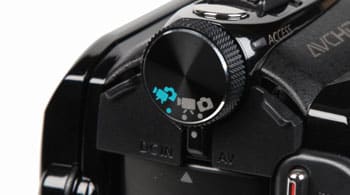
Auto Mode is confusingly called Dual Shot mode
The menu structure of the JVC GZ-MG670 is about as straight-forward as they come. Everything is packed into a single Administrative menu, which has a few submenus for manual settings, display settings, etc. The real hassle of the menus is not finding what you need, but navigating them with the Laser Touch controls. The slider bar that controls most of your navigation is often late to respond, which will have you flying by your menu choices. Leave the system sounds on and scroll by listening to the beeps and you should be fine.
Auto Mode
{{section_header}}{{section.name}}{{/section_header}}
With the increasing popularity of high definition video, the user base for standard definition camcorders is becoming increasingly populated by less experienced videographers. That makes automatic controls all the more important. We found the JVC GZ-MG670 to be moderately proficient in this arena. The most troublesome setting is, unfortunately, the automatic white balance, which really struggled in most indoor lighting conditions. Tungsten and fluorescent lights cast a hue over the entire image that was never quite corrected why the white balance. Even more unfortunately, performing a manual white balance on the MG670 is cumbersome and unintuitive.
All the other controls fare better, especially the autofocus. In very low light, the camcorder might struggle to find focus and keeping object in focus at the full 35x zoom can be tricky, but almost everything else works well. This is a blessing, since the manual focus tool is one of the worst we've seen.
As for exposure, most users will find the automatic adjustments more than adequate. JVC even throws in some extra control over how the camcorder chooses its automatic exposure: you can choose either Whole Screen or Spot metering. As the name implies, the Whole Screen option looks at the entire shot and automatically corrects for exposure as best it can. Spot metering creates a small red target in the center of the screen; whatever appears in the center of the target becomes the point of metering. You can move that target horizontally left or right, but this is a little tedious and makes the tool feel more like a manual control. (If you're going to go to the trouble of tweaking your metering point, why not just set the brightness manually?)
There's also backlight compensation, which works quite well when you're trying to shoot a shadowy subject that's backlit by bright light. The control is a bit hidden; you'll find it as a button attached to the slider during shooting and not any of the menus.
Low Light Modes - There are no dedicated low light modes on the JVC GZ-MG670. The scene modes (also known as Program AE modes) include a couple options to enhance low light performance: Night and Twilight. There's also the auto gain control (AGC), which will lower shutter speed, especially when set to auto.
Scene Modes - In addition to the normal automatic settings, you can choose from a list of Program AE modes—usually called 'Scene Modes' on most camcorders. These will serve as a slight guide to how the camcorder is making its automatic adjustments. Options include Night, Twilight, Portrait, Sports, Snow, and Spotlight.
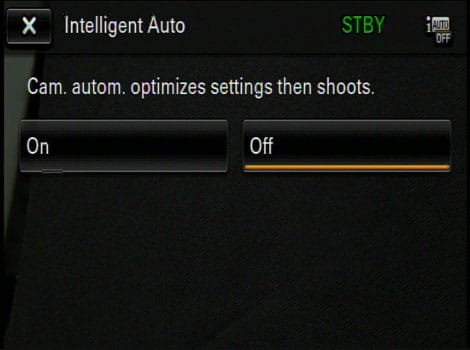
The iAuto mode button is difficult to find, but when you do find it the option for turning on the mode looks like this.
Handling
{{section_header}}{{section.name}}{{/section_header}}
The JVC GZ-MG670 has the exact same body design as every 2009 JVC camcorder—a design that will be familiar to anyone that used 2008 camcorder from JVC. The result is more than an aesthetic similarity; every camcorder feels nearly identical in your hand and functions in nearly the same way.

As with last year's models, the body of the camcorder fits comfortably and practically in your hand, despite its small size. The contour on top doubles as a grip for the fingers of your right hand and as casing for the hard drive. (Though, JVC's flash memory camcorders have this same piece of architecture.) The buttons are all sensibly located, including the secondary record button the LCD for two-handed shooting. The one design features that diminishes the handling experience is the new hand strap, which is extremely narrow and flimsy. The strap offers little in the way of comfort or stability—features essential to a long day of handheld shooting.

One final element that requires discussion is the Laser Touch system, which is the camcorder's primary control method, taking the place of joysticks, directional pads, and touch screens on the competition. We think the jury is still out on this control interface, which makes camera operation fun at times and frustrating at others. The buttons feel smooth and pleasant under your fingers, but there's no tactile response to let you know when a function has activated. Much like a touch screen, you're left with visual and auditory cues, which can sometimes lag thanks to a sluggish menu. We strongly recommend that you leave the operation sounds turned on whenever possible; the beeps and tones will help with Laser Touch operation a good deal. Once you've gotten accustomed to the controls, it will become easier to cycle through options without accidentally flying by the one you want.


These dedicated buttons give you quick access to aperture and shutter speed controls.
Portability
{{section_header}}{{section.name}}{{/section_header}}
The whole Everio line this year is very portable, featuring a compact design and few necessary add-ons to clutter your bag. The 80GB hard drive means you probably won't have much need for memory cards. A spare battery, AV cable, and DC adapter are probably sufficient.
Battery Life
{{section_header}}{{section.name}}{{/section_header}}
The battery life on the JVC GZ-MG670 fared well compared to the competition. Despite being a hard drive camcorder, the battery lasted a hearty 2hr, 23m, 14s (143 minutes). It's possible that manufacturers are finding more and more ways to conserve battery power, so we'll have to see how this compares to the other 2009 models that are coming into our labs. More on how we test battery life.

LCD
{{section_header}}{{section.name}}{{/section_header}}
The JVC GZ-MG670 has the same 2.7-inch LCD as last year's JVC models. The LCD resolution is 123,000 pixels and there are eleven different brightness settings controlled via a sliding scale much like the brightness control for video. You can also adjust the monitor backlight to brighter, standard, and auto. We usually caution against changing your LCD settings, as this will give you a false sense of what your final recorded video will look like.
Stabilization
{{section_header}}{{section.name}}{{/section_header}}
The image stabilization (IS) system on the JVC GZ-MG670 is not great, but it did help stabilize the image a bit. It utilizes a digital stabilization system rather than an optical system, the preferred alternative. Optical stabilization is not guaranteed to be more effective, but our experience has usually shown it to be the case (OIS also doesn't result in image degradation). More on how we test stabilization.
In low shake, the IS reduced the shake by 35%. In our high shake test, however, the electronic stabilization only reduced the shake by 14%.
The video above gives a different way of seeing the same conclusion. The IS is passable on this camcorder, but it isn't nearly as good as some of the optical stabilization systems you'll find on high-end models from Sony and Panasonic.
Miscellaneous Controls
{{section_header}}{{section.name}}{{/section_header}}
Tele Macro
Tele Macro is meant to help with focusing on small objects. We saw no particular benefit from this function.
Audio Controls
{{section_header}}{{section.name}}{{/section_header}}
The JVC GZ-MG670 has very little in the way of audio features. There's a built-in microphone with optional wind cut, but that's about that. There is no accessory shoe, microphone port, or headphone jack. You also can't make any manual adjustments to our audio features.
Editing
{{section_header}}{{section.name}}{{/section_header}}
The JVC GZ-MG670 comes with two programs to help you organize and edit your footage—Digital Photo Navigator 1.5 and Everio Media Browser SD. The Digital Photo Navigator software is essentially a photo album program that allows you to store, sort and export your images and clips. The Everio Media Browser SD offers a few more features, including minor editing capability, DVD creation, and YouTube uploading, but it is still a very basic video program overall. Neither the Digital Photo Navigator nor the Media Browser are compatible with Macs. For an overview of the software that ships with this and other camcorders, see our article: Video Editing Software For Your Camcorder{{product.brand.name}}-Included-Software.htm.
The GZ-MG670 itself features a number of 'one-touch' buttons that attempt to provide seamless execution with a connected PC. The buttons don't do a very good job, however, and their use is confusing. The Upload and Export buttons must be engaged before you begin recording. Afterwards, this footage can either be quickly uploaded to YouTube or exported to iTunes using the Media Browser software.
Direct DVD is the last 'one-touch' button and it is probably the most useful. It allows you to burn footage from the camcorder onto a DVD—using an external disc burner or PC of course.
Compression
{{section_header}}{{section.name}}{{/section_header}}
The JVC GZ-MG670 records video using the MPEG-2 codec, which is the compression you'll commonly find on standard definition camcorders that record to internal hard drives, flash memory, or DVD. It isn't the best or most efficient method of compression, but MPEG-2 is very popular, which means you shouldn't have trouble finding software that is compatible with your footage.
There are four video quality options available on the GZ-MG670: Ultra Fine (8.5 Mbps), Fine (5.5 Mbps), Normal (4.2 Mbps), and Economy (1.5 Mbps). The Economy setting records video at 352 x 240, while the other settings all capture footage at 720 x 480.
A unique feature on the GZ-MG670 is its HD up-conversion option, which is available via the camcorder's HDMI output. Does this output actually provide higher quality video? Not really—but that doesn't mean it is totally useless. The HDMI output allows you to easily connect the GZ-MG670 to a high definition television and view your footage in a 720/480p widescreen presentation. The quality may not be better than when connected via a standard RCA cable, but your picture looks full and promising in its correct aspect ratio. Read more about the advantages and disadvantages of various high definition compression types.
Media
{{section_header}}{{section.name}}{{/section_header}}
The JVC GZ-MG670 records video to its 80 GB internal hard drive or MicroSD memory cards. This 80 GB is a significant upgrade over the 30 GB hard drive featured on the GZ-MG330 and it should provide you with enough space to capture all the highlights from your family vacation (it'll store up to 19 hours of footage at the highest quality). The MicroSD card slot is a good option to have in a pinch and can be useful if you want to capture video that you can quickly hand off to a friend.
The various recording qualities on the GZ-MG670 allow for different record times on the 80 GB internal hard drive. This table breaks down how much video can be recorded with each setting: Read more about the advantages and disadvantages of various media types.

Still Features
{{section_header}}{{section.name}}{{/section_header}}
Like the JVC GZ-MG330 before it, the GZ-MG670 isn't a camcorder loaded with still features. The camcorder doesn't offer any still image size options (all photos are 832 x 624), has no flash, and offers two quality options (fine and standard). Offering a maximum still image size of 832 x 624 basically means photos captured with the GZ-MG670 are going to look like garbage. They'll work on the web or as small attachments in an Email, but don't plan on printing them out to frame above your desk.
Most of the manual controls that are available to you in video mode are also applicable when taking still images. White balance, exposure, digital effects, etc. are all utilized in the same manner and are accessed through the same menu system as in video mode. The shutter speed can be set to speeds of 1/2 to 1/500 of a second.
The only dedicated still features on the JVC GZ-MG670 are a self timer (can be set to 2 or 10 seconds) and a continuous shutter option that will snap photo after photo for as long as you hold your finger on the shutter button.
Just as we saw with video performance, the JVC GZ-MG670 produced very accurate colors in its still images. At best, the camcorder measured a color error of 2.97 with a saturation level of 102.6% in our still color testing. While this is a solid color accuracy score, keep in mind that the still features and maximum resolution for photographs on the JVC GZ-MG670 is quite limited. The strong colors won't do you any good when your image resolution is a measly 0.5 Megapixels.
The GZ-MG670 measured a noise level of approximately 0.735% in our still noise testing. This is a bit higher than the camcorder scored on our video noise tests, which tells us JVC didn't put too much effort into boosting GZ-MG670's still image capabilities. This is also a worse noise score than the percentage put up by last year's JVC GZ-MG330 (0.56% noise). The 0.735% noise isn't terrible, however, and since the camcorder doesn't take high resolution photographs you probably won't even notice the extra noise.
At best, the GZ-MG670 measured a horizontal resolution of 599 line widths per picture height (lw/ph) with an oversharpening of 8.6%. The vertical resolution was measured slightly lower at 490 lw/ph and with 4.4% oversharpening. This is a big improvement over the JVC GZ-MG330, which had only 428 lw/ph horizontal and 384 lw/ph vertical. Still, these resolutions are nothing compared to what you'd get from even a low-end dedicated still camera or a mediocre HD camcorder.
Lens & Imaging System
{{section_header}}{{section.name}}{{/section_header}}

All standard definition Everios from JVC this year are using the same lens and sensor, but two camcorders—the GZ-MG680 and GZ-MG670—allow for digital upconversion to high definition through an HDMI terminal. This might make up for the company trimming down on standard definition offerings: there will be nothing to replace last year's top-of-the-line standard def model. Without the significantly larger and higher resolution sensor of last year's GZ-MG730, consumers will have to upgrade to high definition to get JVC's top-of-the-line imaging system.
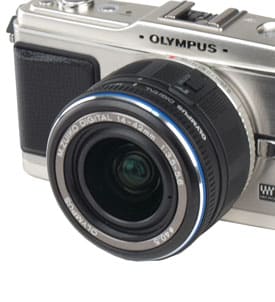
LCD
{{section_header}}{{section.name}}{{/section_header}}
The JVC GZ-MG670 has the same 2.7-inch LCD as last year's JVC models. The LCD resolution is 123,000 pixels and there are eleven different brightness settings controlled via a sliding scale much like the brightness control for video. You can also adjust the monitor backlight to brighter, standard, and auto. We usually caution against changing your LCD settings, as this will give you a false sense of what your final recorded video will look like.
Connectivity
{{section_header}}{{section.name}}{{/section_header}}
The JVC GZ-MG670 comes with the standard array of essential ports, plus an HDMI output for utilizing the camcorder's HD upconversion feature. There's also a mini-USB port and a standard AV output. (The AV port can function as an input as well.) You'll find no accessory shoe, headphone output, or microphone input. Just the bare essentials.
Most of the port covers are the typical filmsy rubber affairs you see on a lot of consumer camcorders. They're usually sufficient for keeping out dirt and dust, but you'll need to be careful, as too much wear and tear can yank the port coverings out.
Media
{{section_header}}{{section.name}}{{/section_header}}
The JVC GZ-MG670 records video to its 80 GB internal hard drive or MicroSD memory cards. This 80 GB is a significant upgrade over the 30 GB hard drive featured on the GZ-MG330 and it should provide you with enough space to capture all the highlights from your family vacation (it'll store up to 19 hours of footage at the highest quality). The MicroSD card slot is a good option to have in a pinch and can be useful if you want to capture video that you can quickly hand off to a friend.
The various recording qualities on the GZ-MG670 allow for different record times on the 80 GB internal hard drive. This table breaks down how much video can be recorded with each setting: Read more about the advantages and disadvantages of various media types.

Still Features
{{section_header}}{{section.name}}{{/section_header}}
Like the JVC GZ-MG330 before it, the GZ-MG670 isn't a camcorder loaded with still features. The camcorder doesn't offer any still image size options (all photos are 832 x 624), has no flash, and offers two quality options (fine and standard). Offering a maximum still image size of 832 x 624 basically means photos captured with the GZ-MG670 are going to look like garbage. They'll work on the web or as small attachments in an Email, but don't plan on printing them out to frame above your desk.
Most of the manual controls that are available to you in video mode are also applicable when taking still images. White balance, exposure, digital effects, etc. are all utilized in the same manner and are accessed through the same menu system as in video mode. The shutter speed can be set to speeds of 1/2 to 1/500 of a second.
The only dedicated still features on the JVC GZ-MG670 are a self timer (can be set to 2 or 10 seconds) and a continuous shutter option that will snap photo after photo for as long as you hold your finger on the shutter button.
Just as we saw with video performance, the JVC GZ-MG670 produced very accurate colors in its still images. At best, the camcorder measured a color error of 2.97 with a saturation level of 102.6% in our still color testing. While this is a solid color accuracy score, keep in mind that the still features and maximum resolution for photographs on the JVC GZ-MG670 is quite limited. The strong colors won't do you any good when your image resolution is a measly 0.5 Megapixels.
The GZ-MG670 measured a noise level of approximately 0.735% in our still noise testing. This is a bit higher than the camcorder scored on our video noise tests, which tells us JVC didn't put too much effort into boosting GZ-MG670's still image capabilities. This is also a worse noise score than the percentage put up by last year's JVC GZ-MG330 (0.56% noise). The 0.735% noise isn't terrible, however, and since the camcorder doesn't take high resolution photographs you probably won't even notice the extra noise.
At best, the GZ-MG670 measured a horizontal resolution of 599 line widths per picture height (lw/ph) with an oversharpening of 8.6%. The vertical resolution was measured slightly lower at 490 lw/ph and with 4.4% oversharpening. This is a big improvement over the JVC GZ-MG330, which had only 428 lw/ph horizontal and 384 lw/ph vertical. Still, these resolutions are nothing compared to what you'd get from even a low-end dedicated still camera or a mediocre HD camcorder.
Other Features
{{section_header}}{{section.name}}{{/section_header}}
Video Light
GZ-MG670's LED video light will cast a pale bluish light to help you in extremely dark scenarios. Unfortunately, it's not going to do much in truly dark environments. You also have to use the menu to turn the light to auto, on, or off; it would have been nice to have an external video light button.
Drop Detection
The JVC GZ-MG670 has built-in drop detection so that the camcorder will automatically stop recording when it detects a sudden shift in elevation. This feature lifts the physical needle so that the hard drive is less likely to be damaged in the drop.
Digital Effects
Located in the Manual Setting menu, JVC offers a handful of digital image effects, just in case you don't have time to apply them in post-editing. The available effects are Sepia, B/W Monotone, Classic Film, and Strobe.
Info
JVC offers a nice capacity and battery meter, accessed by pressing the Info button in the LCD cavity. When initially pressed, a screen containing a pie graph appears, accompanied by a list of the remaining recordable times per each recording quality level. Pressing the Info button again cues a screen containing a vertical battery life meter and remaining digital minute display.
Title / Register Event
During playback, there is a button that will allow you to assign a decorative title placard to each playlist. Many software editing programs allow you to do something similar, often with the same gaudy results.
Panasonic SDR-H60 Comparison
The JVC GZ-MG670 is a worthy successor to the MG330. The biggest improvement is the increased sensor resolution, which helped produce improved video performance, especially with regard to sharpness and noise. There are three models in the G series this year: the GZ-MG680 (120GB), the GZ-MG670 (80GB), and the GZ-MG630 (60GB). The top two models are only available in black, but have two minor features: HD upconversion and an AV input. The MG630 is really the spiritual successor to the MG330, since the capacity is the same and it comes in multiple colors.
Despite the similarities on paper, the MG670 does have improved processing that makes for superior video quality in most shooting conditions.
Sony DCR-SR85 Comparison
Manual control aficionados will appreciate the Sony SDR-H60's manual control offerings, coupled with the ability to make adjustments via a joystick—rather than the sometimes finicky Laser Touch system on the JVC GZ-MG670. However, fans of manual controls are usually also fans of superior video performance; in this regard, the JVC has the Sony beat. Particularly when it comes to color accuracy, noise, and low light sensitivity, the MG670 is a clear winner. The powerful 50x optical zoom and optical image stabilization may give the Sony added allure, but those perks aren't usually worthwhile if the general quality of your video isn't as good.
COMP 3
The Sony DCR-SR85 is another standard definition hard drive camcorder from 2008. Thanks to some upgrades in features and technology, the MG670 is superior in a lot of ways. There's 20 GB of extra capacity and superior video quality, despite the slightly lower resolution sensor. You also have a slightly more powerful zoom ratio and the bonus of HD up-conversion on the new JVC. Where the Sony wins out is in manual controls and that elusive accessory shoe, which will attract more advanced users, even if it is a proprietary shoe.
Conclusion
The JVC GZ-MG670, a successor to last year's GZ-MG330, did not disappoint in terms of video performance. Colors are vivid and accurate in a variety of lighting conditions, including low light. Low light shooting, in fact, seems to be one of the key strengths of the MG670, which offers excellent sensitivity, low noise, and strong color.
Where the GZ-MG670 might disappoint is in manual controls and other features. Experienced users might be disappointed with the responsiveness of the Laser Touch and the lack of direct aperture control. There are also no audio features and very little in the way of still features. But since there's no higher-end model from JVC this year, consumers will have to settle for the stripped down version if they're devoted to standard definition video. On the bright side, the strong video performance of the MG670 means you won't be settling when it comes to the quality of your video.
Photo Gallery
{{photo_gallery "Front Photo", "Left Photo", "Left Open Photo", "Back Photo", "Right Photo", "Top Photo", "Bottom Photo", "Lens Photo", "Lens Photo 2", "3D Lens Photo", "Media Photo", "Easy Mode Photo", "Manual Controls Photo", "Zoom Photo", "Zoom Photo 2", "Ease of Use Photo", "Battery Photo", "LCD Photo 1", "LCD Photo 2", "EVF Photo 1", "EVF Photo 2", "Mic Photo", "Mic Photo 2", "Ports Photo 1", "Ports Photo 2", "Ports Photo 3", "Ports Photo 4", "Ports Photo 5", "Ports Photo 6", "Handling Photo 1", "Handling Photo 2", "Handling Photo 3", "Handling Photo 4", "Box Photo"}}
Meet the testers
Jeremy is the video expert of our imaging team and Reviewed.com's head of video production. Originally from Pennsylvania and upstate NY, he graduated from Bard college with a degree in film and electronic media. He has been living and working in New England since 2005.
Vice President of Editorial Management, Kaitlyn oversees the editorial departments of Reviewed.com’s various sites. She has been writing about technology since the turn of the century. Outside of her Reviewed.com home, Kaitlyn is also a theatre director and avid gamer.
Checking our work.
Our team is here for one purpose: to help you buy the best stuff and love what you own. Our writers, editors, and lab technicians obsess over the products we cover to make sure you're confident and satisfied. Have a different opinion about something we recommend? Email us and we'll compare notes.
Shoot us an email

